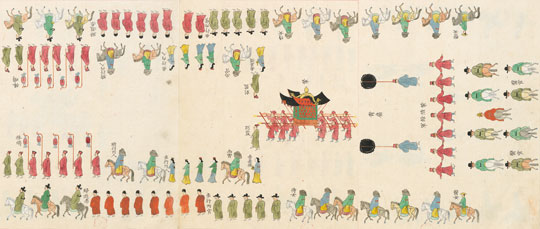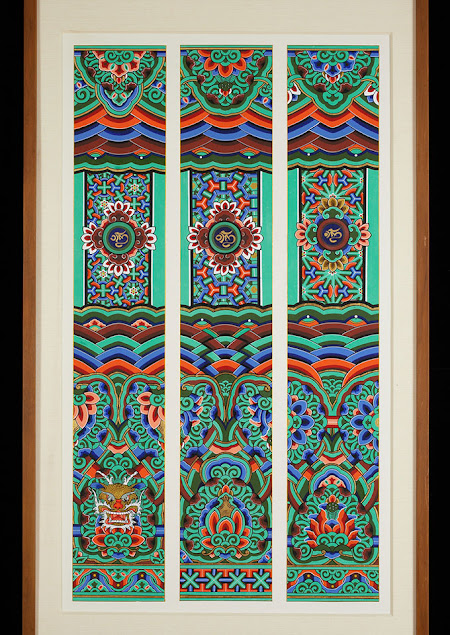Search This Blog
Introducing beautiful pictures of Korea. Among them, we introduce court decoration paintings, which were mainly used as decorations in the court, and folk paintings containing the dream, hopes, and love of the people.
Featured
- Get link
- X
- Other Apps
Dohwaseo, a painting insutiution in Joseon
Dohwaseo (도화서)
Dohwaseo was an intitution in charge of painting during the Joseon Dynasty.
To become a painter at Dohwaseo, you must pass a practical test. As for the test subject, 2 subjects were selected from 4 subjects such as bamboo, landscape, figure painting / 'yeong-mo-hwa' ('yeong' means 'wing of birds, and 'mo' means the fur of animals). It refers to drawing the fur of a bird or animal gently and in detail.
The era of King Yeong-Jo. the 21st king of joseon, and King Jeong-jo, the 22nd king of Joseon, is called Renaissance period of Joseon.
(King Jeonjo)
About the Painter
Most of the painters in Dohwaseo were from middle class. As time passed, a family of painters began to form.
Shin Yun-bok, a famous painter of the Joseon Dynasty, also came from a family of painters. His great grandfather, Shin Il-hong, and his father, Shin Han-pyeong and Shin Yun-bok, worked as a painter for three generations.
What kind of picture did Dohwaseo draw?
Almost all the painting work required in the palace was done.
Basically, portraits of king and patriot and scenes of events held in the country were recorded in detail.
Surprisingly, in those days when there were no cameras, they drew pictures as if they were taken with a camera.
Uigwe(의궤) refers to a record document left for future reference when there is a major nation event. Each picture is detailed,with names and positions written on it, and even clothes and facial expressions are vivid.
It feels as lively as if you were watching a palace event in the Joseon Dynasty.
In addition, Dohwaseo painters drew the patterns of pottery used in the palace or decorated the 'Dancheong' of the palace building and participated in the production. 'Dancheong'(단청) refers to adding colors and pattern based on the five colors of blue, red, yellow, white, and black. It mainly refers to the beautiful and solemn decorated of wooden buildings in palaces. Color pigments are natural substances such as soil and rocks. Every corner of the palace was not touched by the painters of Dohwaseo.
Dohwaseo painters, despite their outstanding talent, were not properly recognized because of their social status.
Thanks to them, Joseon's high-quality documentary culture was possible and numerous brilliant achievements were made.
I hope that there talent and artistic spirit will be known to people all over the world.
- Get link
- X
- Other Apps


















